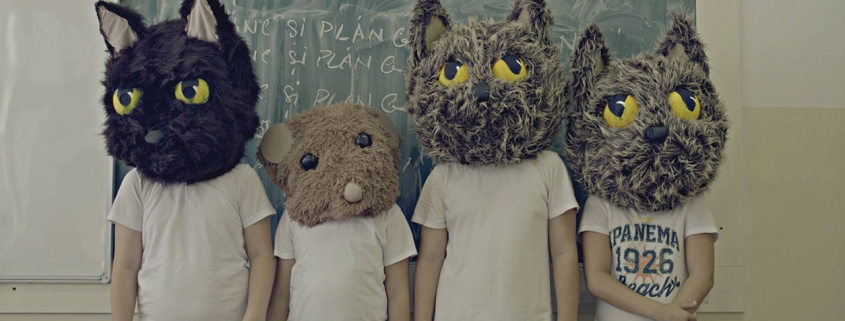VIDEO CONTENT
Cătălin Rulea
STATEMENT
In film, time is restructures into spatial units that portray in order to connect us. In the suspense of contemplation we do not immerse ourselves into the situation of being there, nor do we empathise in emotional symbiosis with what is being portrayed in order to signify and thus place us in a relationship that may confuse us, but instead we turn into a complex entity of consternation, self-interrogation, inadequacy, but also of positioning, a conceptually mutagen entity created in the mind of the artist. Facing the work, we no longer belong to ourselves, but instead we become something of what the artist designed. We are the audience of the artist’s thought, slightly more so than in the video tableaux on the screen, as the audience is the one required to react and to articulate the continuity of interrogation regarding the acts being filmed.
Each video tableau brings up through performance a social situation that many of us have not reacted enough against, or the consequences of which we have not been fully aware of, or which we have considered to be the responsibility of others to control, improve, diminish, resolve, understand better and act more effectively against. Re-mediatising such social topics through art relies on a working hypothesis for challenging the aesthetisation of social intervention, of the coincidence between emotion and information, of the need for artistic engagement in detecting, on an extended scale, issues that are specific to our time.
The video and performance installation made by Cătălin Rulea proposes an affective analysis and a critical engagement in understanding social situations such as the perception of homeless individuals (in „Foamea”/ “Hunger”), of those in the autism spectre (in „Scena”/”The scene”), of those involved in bullying (in „Oamenii”/”People”), of those who use drugs, are dependent on alcohol or practice prostitution (in „Rolul”/”The role”), of those who experience the paradox of happiness in precarity (in „Afecţiunea”/”Affection”) or of those who constitute, in their social agonism, the public (in „Publicul”/”The public”).
The artist uses a different language in order to translate the detection of certain realities of social life in our proximity into performative visual parabolas through which the audience can be placed in a state of reflection, debate, action. The situations chose in order to illustrate social phenomena in various registers of confrontation are exemplificative for the fragmented and somewhat apocalyptic world we live in. The moments are focal shifts towards fragments, and time is characterised by a trend towards transformation.
(curatorial argument by Cătălin Gheorghe)

